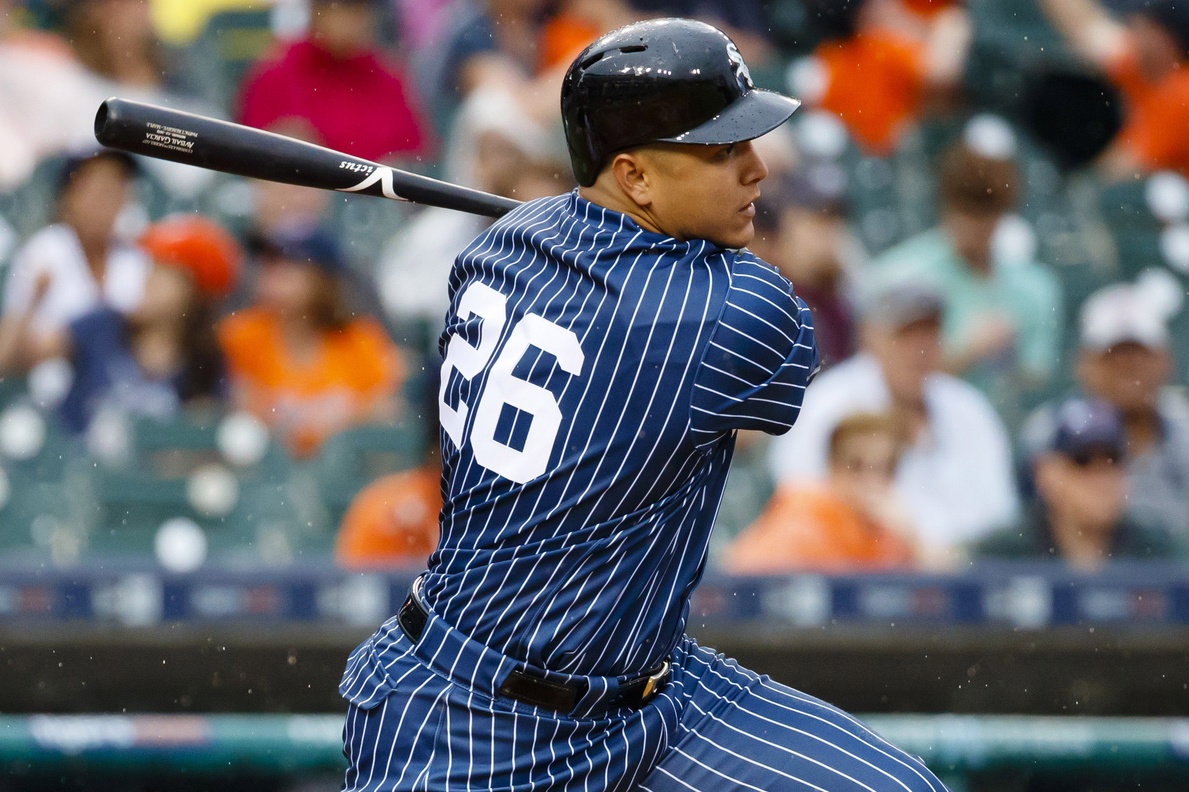“I know I will do better” were the words from Avisail Garcia this past winter when he was asked about the upcoming season. Unfortunately for both Garcia and the Chicago White Sox, Garcia hasn’t been all that much better.
At the moment, Garcia sports a very pedestrian .242/.302/.389 batting line, which is good enough for a slightly below league average .258 TAv. In a vacuum, this isn’t awful. Heck, it’s certainly not awful even when you compare those numbers to the .245/.319/.456 batting line (using a weighted average to calculate total TAv amongst this group, this batting line translates to roughly a .272 TAv) for all American League designated hitters that have accumulated more than 100 plate appearances. But, much more importantly, Garcia’s numbers are by no means above average in this scenario and the White Sox desperately need above-average production from their regular DH if they want to make a bid to play in the postseason this year.
Doubly unfortunate for both the White Sox and Garcia, the Chicago roster sports only four regulars with a TAv over the league average of .260, Todd Frazier at .293, Adam Eaton at .268, Melky Cabrera at .267, and Brett Lawrie at .264. Given than only Frazier is impressively above league average, it should come as no surprise that the White Sox are 11th in the American League in runs scored at a paltry 219, or 3.7 per game (yikes). The White Sox somehow still manage to have a +10 run differential, which really is an amazing testament to the early success of the rotation and bullpen, but it’s pretty clear this team needs more offense now.
The key word there is definitely “now.” The team simply cannot afford to continue to wait on Garcia to turn his raw power into production if they want to make the playoffs. Not only is waiting on Garcia to develop a bad gamble (something I tackled back in the off-season), but despite all of Garcia’s efforts this off-season to improve himself at the plate, changes in his batting stance and approach, his results remain largely the same as the years prior. The only area Garcia has significantly changed is his out of zone swing percentage which dropped from 44.4 percent in 2015 to 37.6 percent in 2016. Almost cruelly, this incremental gain has been offset by a downturn in out of zone contact percentage which has dropped from 51.8 percent to 46.7 percent this year, which in turn means Garcia is still swinging and whiffing at pitches out of the zone at nearly the same rate; 21.4 percent in 2015 and 20.1 percent in 2016.
This is all certainly a shame for Garcia, who by all reports is a good guy who works really hard and wants to succeed for this team. I personally don’t think anyone puts in the time and effort that major league baseball players do unless they genuinely want to play the game at a high level, and Garcia is certainly no exception. Any idea that Garcia isn’t trying to change or isn’t trying to improve is misguided and untrue.
Unfortunately, for whatever reason, things just have not clicked for Garcia here with the White Sox and the team needs to move on from the experiment and cut their losses with him. The move may also be beneficial to Garcia, who probably could use some fresh scenery away from the unfair expectations placed upon him when he was lazily given the nickname “Mini Miggy” simply because he looked like prolific slugger Miguel Cabrera, and the unfair responsibility the White Sox placed on him this year asking him to be a plus-hitting battery that would power the offense.
Garcia simply isn’t that right now and the White Sox relying on him to be that was foolish during the off-season and even more foolish now. Put in the terms of Cinderella, the clock has struck midnight on the Avisail Garcia White Sox experiment.
Even if Garcia does experience success somewhere else, that doesn’t mean the White Sox made the wrong move or gave up on him too soon. Too often, with this current White Sox regime in particular, they have held onto players long past the time it’s clear they aren’t going to provide value to the organization. Whether this is just an organizational fear of seller’s remorse or a front office that truly wants to give their players every single chance they can to succeed is unknown, but the White Sox, mired in a seven-year playoff drought, an extended 6-19 slump, coupled with a run of very strong play from their chief competition, just can’t go through the same process again.
They need a change, and the booting of John Danks and subsequent acquisition of James Shields suggests that the front office understands this. There are hitters that will be available on the market, I just hope this team can bring in some offense before it’s too late.
Lead Image Credit: Rick Osentoski // USA Today Sports Images
